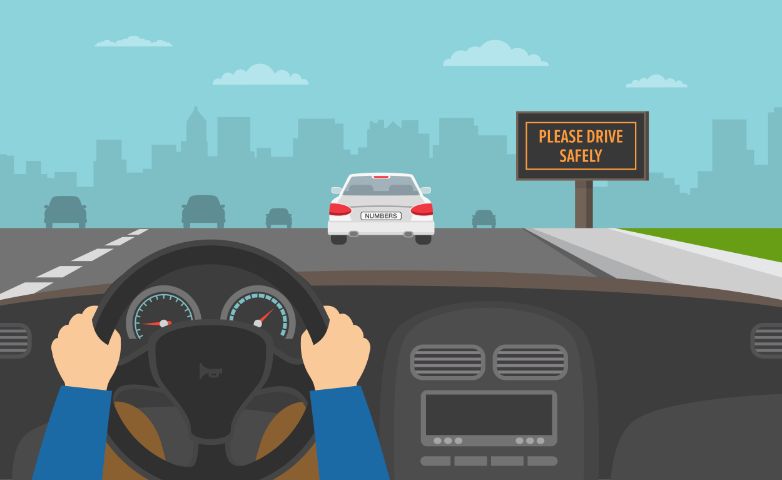A Comprehensive Guide to Driving Electric Vehicles Properly
A Comprehensive Guide to Driving Electric Vehicles Properly

When it comes to driving, speed, range, and safety become the ultimate concern for any conscious driver. Since EV is the future of the worldwide automobile industry, you can make the most out of it from the advanced models that have already captured the market. By maintaining valid car insurance, and exercising certain helpful tips and tricks, you can ensure the juiciest EV ride on the road.
A. Before the journey:
a. Plan for the journey:
If you are willing to undertake a long journey or into some unfamiliar terrains, you need to fact-check and undertake a proper study and background check about the location. When you are driving on an EV, make sure that you get enough charging stations on the way, to be on the safe side. Try to get accustomed to the varied locations of rapid charge points.
b. Consider the season:
With the change in temperature, the performance, and the output of your EV will vary. Cooler weathers always diminish the battery performance when compared to the summer conditions. The anticipated range can be calculated on the algorithms in the car’s software based on the most recent travels, wind speed, temperature, weight in the vehicle, powering range like wipers, heater, lights, heated seats, entertainment system, etc. To ensure optimum efficiency, always carry the minimum load.
c. Pre-conditioning:
If your vehicle possesses this feature, exercise it before undertaking the journey. Pre-heat the interiors with the mains power, with the car remaining connected to the charge point, for energy conservation in the battery. Pre-cooling can also be done. On chilly wintry mornings, you can recondition your car for effective de-icing of the windows.
d. Check tyre pressures regularly:
Regular checking of the tyre pressures will retain optimum range and efficiency.
B. During your journey
a. Cruise control:
Cruise control is a helpful feature, but that does not ensure that you are driving efficiently. This will affect your vehicle’s range. Therefore, it is best to limit-setting cruise control and exercise a clever and balanced combination of manual control and cruise control.
b. Speed limiter:
It is great for driving within the city and in specialised 20 km/h zones for maintaining effective speed limits.
c. Range monitoring:
Try to make out the best of the onboard tools-the battery’s energy levels with anticipated driving conditions, depending on the current driving conditions in juxtaposition with the satellite navigator with miles to the desired destination. Keep an eye on the usefulness of the power gauge reading. It keeps fluctuating constantly.
d. Power gauge:
To experience the optimum range, target to drive with as close to 0 KW as possible. Under normal circumstances, you can use regenerative braking. However, if the power gauge displays a negative figure, then the regenerative braking might slow down the performance. Allow regenerative braking to be utilised only while taking roundabout turns, otherwise, it will consume more power unnecessarily.
e. Speed:
To enjoy the maximum range, try to limit your car’s speed to the lower range like experiment driving at 50 km/h and 55 km/h, witnessing the range of difference. You can even accomplish a long journey without any requirement to halt for a top-up.
f. Performance:
To ensure a smooth journey, especially on wintry mornings, it is best to warm up your EV’s battery before the onset, utilising slight acceleration. This ensures enhanced performance from the residual charge in the battery. You will experience a slight difference in its performance on particularly windy days. For lengthy journeys, it is best to maintain a halting distance at certain intervals.
g. Economy tariffs:
There may be some merit in exercising a close review of your electricity supply conditions and tariffs. The level of these tariffs will differ depending on your usage, driving habits, energy consumption, etc.
C. While charging the vehicle:
a. Battery care:
To enjoy the optimum performance, make a habit of charging the battery while it remains still warm. This ensures quick charging. However, the battery cells enjoy an enhanced level of protection when it charges under cooler conditions, but the charging level becomes significantly slower.
b. Charging lead care:
Ensure to entirely unwind the charging lead and adjust comfortable stretching, preventing any inductive loop formation. This might generate unnecessary heat, tripping the circuit breaker.
c. Safety at a public charge point:
The only thing that you need to monitor while charging your vehicle at a public charge point is to ensure a safeguard against probable tripping hazards.
d. State of charge in the battery:
The manufacturers are specially designed to protect the cells present in the batteries. When we observe a lowering of the charging level, we must note that there still remains a certain reserve limited within the battery. Ideally, it is best to charge the battery before it reaches the 20% mark. For optimum performance, allow your battery to charge up to 80%. Filling the remaining 20% takes an extended time.
Conclusion
This comprehensive guide gives a clear indication of all the relevant aspects regarding the best and the most helpful tips and tricks to observe while driving your EV. Ensure proper car insurance coverage and enjoy smooth driving.
Disclaimer: The above information is for illustrative purpose only. For more details, please refer to policy wordings and prospectus before concluding the sales.
RELATED ARTICLES
Busting Some Common Myths About Evs
Ev Battery Range: Tips For Improvement
The Ultimate Guide To Electric Vehicle Charging










 Health Insurance
Health Insurance  Travel Insurance
Travel Insurance  Car Insurance
Car Insurance  Cyber Insurance
Cyber Insurance  Critical Illness Insurance
Critical Illness Insurance
 Pet Insurance
Pet Insurance
 Bike/Two Wheeler Insurance
Bike/Two Wheeler Insurance  Home Insurance
Home Insurance  Third Party Vehicle Ins.
Third Party Vehicle Ins.  Tractor Insurance
Tractor Insurance  Goods Carrying Vehicle Ins.
Goods Carrying Vehicle Ins.  Passenger Carrying Vehicle Ins.
Passenger Carrying Vehicle Ins.  Compulsory Personal Accident Insurance
Compulsory Personal Accident Insurance  Travel Insurance
Travel Insurance  Rural
Rural 











